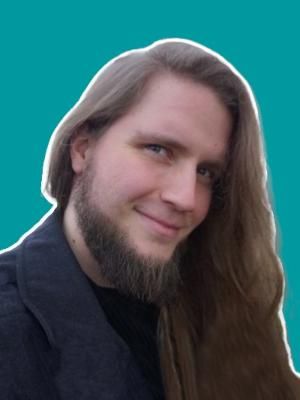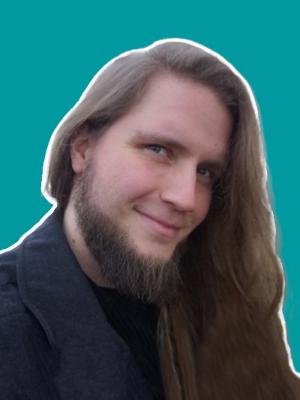Would I even fit in? Why and how I applied for an SSI Fellowship
Posted on 9 August 2022
Would I even fit in? Why and how I applied for an SSI Fellowship
 By SSI Fellow Jesper Dramsch.
By SSI Fellow Jesper Dramsch.
I’m probably not the typical SSI Fellow.
I don’t have a formal background in software; I am not a Research Software Engineer, I’m not an exceptional coder, and I’m not in university. I took a gamble anyway and applied, and since you’re reading this, I was miraculously accepted.
Let’s dissect that and add some perspective on why I think we “other” folks should apply.
I was wrong
I had the SSI Fellowship on my radar because two people who I highly respect online are SSI Fellows.
Tania Allard (2018 Fellow) was someone I met at the EuroScipy conference. After some great talks from her, we had a chat about diversity and reproducibility. Leonardo Uieda (2020 Fellow) and I crossed paths in the geoscientific open-source space. We mostly interacted online and worked together on some projects to promote open-source. They both do fantastic stuff, including but not limited to: Tania currently being on the board of directors of the Python Software Foundation and Leo having worked on Generic Mapping Tools (GMT) and being a topic editor for the Journal of Open-Source Software (JOSS).
Now that I’m a Fellow and have got to know people in my cohort, I see that my pre-conceived notion wasn’t entirely correct. Of course, I met many research software engineers, but there are creative people like a podcaster, neuroscientists, citizen-science enthusiasts, and others who love machine learning - and other neurodivergent people. There are so many different people in this Fellowship. Maybe I wasn’t that different after all.
Genuinely, whether it’s the Slack community, events, or side-chats with other Fellows, it has been a great experience so far.
Why I became an SSI Fellow
Doing a PhD can be very isolating.
Doing a PhD during a pandemic most certainly is.
I was attracted to the SSI Fellowship to find community. I have been talking about reproducibility and sustainability in software for ten years in one form or another. I wanted to meet like-minded people that I could interact and possibly even collaborate with!
The funding is nice, especially now that events are becoming in-person again. It will be great to travel. But I was motivated mainly by finding community and interacting with people who are already convinced that sustainable software is the right way for high-impact research.
Getting the external label by the SSI to acknowledge my efforts in some sort of official capacity had a certain ring to it. And quite frankly, I thought this was a way to emulate some of the experiences of the people I look up to that are Fellows.
Time to devise a plan!
I knew an “I wanna keep doing what I do” wouldn’t cut it.
Time for some introspection!
A common theme that emerged from almost anything I currently do. See if you can spot it:
- For my newsletter, I wrote a small ebook about making machine learning work in the real world.
- I reviewed journal papers that didn’t validate their results correctly and needed major corrections.
- Colleagues discussed papers they were reviewing with insufficient validation.
- Machine learning results in applied science being unreproducible.
- University classes mostly ignore validation and evaluation in their curriculum.
- I wrote an entire section about machine learning bias and validation for an ITU report.
It became clear to me that teaching proper machine learning validation and enabling applied scientists to elevate their research, get papers accepted, and make awesome science was at the core of this all. What better way to do this than an interactive tutorial or workshop at a conference which applied scientists go to? Go where the scientists are and make it easy to implement the solutions I present!
And then I can, of course, keep doing the things I already do, like teaching classes that help reproducibility, making YouTube videos, and writing blog posts. Genius!
Here’s how I framed this in my application video:
Advice for your application
You may wonder how you can learn from my application. After all, I made it in! I don’t think I’m a great example in most aspects of my application. I made it in on the first try, which would mostly be survivorship bias. Nevertheless, I have some thoughts that might help you with your video presentation and the selection day.
I researched other presentations and plans before to get an idea of who gets accepted with what type of self-presentation and adjusted my application accordingly. You can find some videos on YouTube and read the descriptions of current Fellows on the SSI website.
Making a great video application
It’s not easy keeping to 6 minutes. The SSI tells you exactly what they’re looking for, so for the best video presentation, follow their suggested structure. At the time of writing this, the structure is:
- Who you are professionally (1 minute suggested)
- What you do (1 minute suggested)
- Your plans for the Fellowship (4 minutes suggested)
So I had a problem. I have done too many things in my life to mention them all in a minute or two. Way too many. You probably do too, so here’s what I focused on - a good story!
Was me talking to professors in 2011 as a small student the most impressive achievement I have in life?
No.
But it paints a story that I have been doing SSI-aligned work for ten years in some capacity, and it frames how I would approach my Fellowship, should I be selected. When you take people on a journey with you, they will understand your motivation to apply much better. Then the last part, where you are trying to sell the viewer on your plans for the SSI, it is much easier to convince that 1) you can do what you propose, and 2) it is aligned with the goals of the SSI.
In addition to the video application guide with technical info, I want to mention that this type of video is one of the most straightforward videos to edit. You can use free software like Davinci Resolve that allows you to cut out long silences and filler words. That way, you don’t have to make a perfect 6-minute presentation, but you can cut out little mess-ups. But don’t over-edit. The SSI Fellowship is as much about you as it is about software and some personality is something I would recommend. Otherwise, we could just let a robot voice read for every one of us, which would be a bit of a drag, even as a machine learning enthusiast.
Most people will benefit from writing a script or at least bullet points they want to discuss in the 6 minutes. This gives structure and a way to practice. On that note, plan for a few practice runs. Despite having a YouTube channel and having given multiple talks in my life, I have to admit my first recording was over 12 minutes long. This is a chance to bring your writing to life and bring context to the application form and I’d definitely put a bit of effort into it.
Leaving an impression on selection day
The selection day takes place online and has several interactive, collaborative sessions. One selection committee member monitors these sessions. This can be a bit weird, and I was definitely nervous. I got even more nervous after seeing the videos of some of my group members, who were just incredibly talented and hard-working. But these groups aren’t about competition.
A rising tide lifts all ships.
Try to be a good communicator. So if you’re used to talking a lot, leave space for others. If you’re more timid, make sure to add your point of view. You have to speak to be heard, and you have to listen to collaborate. My “life hack” was showing genuine interest in other people’s viewpoints and being okay going ahead with the ideas of others, even if my natural bias points me to assume my opinion is best.
But there is one circumstance that might significantly derail you.
Taking on the position of chair of the group. This suddenly changes the entire game. It changed everything for me. Suddenly it was about keeping time, having everyone be heard, and generally ensuring a smoothly run group session without overpowering everyone. For me, it was essential to keep to a tight schedule so we have time for discussion for everyone to be heard, time for a decision, and time to make a demo. In this position, I wanted to make extra sure that I didn’t overpower others with my opinions or take more space than necessary in the discussion, but I had to balance this with the fact that I still had to be heard in the discussion. I tried to emphasise that my suggestions to points weren’t a reflection of the group but rather my thoughts. But then again, maybe I’m overthinking this as I tend to. I just saw that the major problem is that some people are overwhelmed by moderating and time-keeping. Hence, they forget to actually participate in the session as a group member.
I guess the main advice for the selection day is to be flexible.
Conclusion
Don’t count yourself out because you think you might not be the typical SSI Fellow.
There’s a wide variety of Fellows in a wide variety of fields doing a diverse set of things.
Tailor your application to the goals of the SSI and review what current Fellows have presented. Then form a coherent story you can tell in your application video.
For me, this Fellowship has connected me to some great individuals with big ambitions, and I love being in this company, albeit virtually. It enables me to attend some Python events and generally puts a nice label on the work I already love doing. But overall, the collaboration events and sharing of knowledge are my favourites, even though it could always be more. People are busy, after all.
Listen to Jesper talking about their Fellowship plans in this episode of the Code for Thought podcast.

